Bygone Brands: Monica





















|

|

|

|

|

|

|

|

|

|
From the archives: Quirky Gallic-British collaboration was beaten by '70s oil crisis
Originally published in Unique Cars #304, Oct/Nov 2009
Monica
In the era before political correctness and fuel shocks, there existed a genre of large, fuel-guzzling sedans known colloquially as the ‘Businessman’s Express’. Minimum specification included an engine of at least eight cylinders – often sourced from the USA – four leather-swathed seats and a fuel tank large enough to sustain the monster as it surged across entire European countries without pausing for fuel.
The leader of this pack during the late- 1960s was Mercedes-Benz with its 6.3-litre SEL sedan, supplemented by specialised contributions from the likes of Jensen, Iso, Ferrari and Maserati.
French railway rolling stock manufacturer, Jean Tastevin, was one who mourned the demise of Facel and the last of his homeland’s ‘grandes routieres’. These were exclusive and impressive cars, pioneered by the likes of Delage and Bugatti that, by the 1960s, had disappeared under a punitive tax regime.
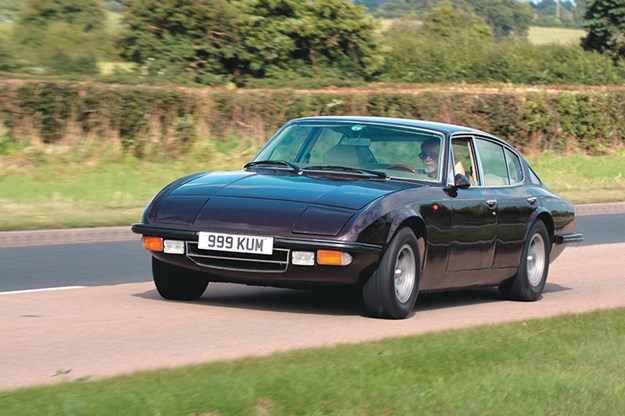
Tastevin’s vision was for a car close in size and presence to Maserati’s Quattroporte but which would avoid the 5000 Franc tax penalty attracted by cars with engines over 2.8-litres.
Tastevin was aware of a 2.6-litre version of the four-cylinder Triumph TR engine developed by Chris Lawrence of UK-based Lawrence Tune, and reportedly capable of producing 123kW.
According to Lawrence’s recollection of events, the first he knew of Mr Tastevin was receipt of a letter – written in French – which arrived at his workshops early in 1967; seeking supply of 250 engines.
Discussions and investigations by both parties followed, leading to Lawrence being commissioned to also design the structure for the car that would be named ‘Monica’, in honour of Tastevin’s wife.
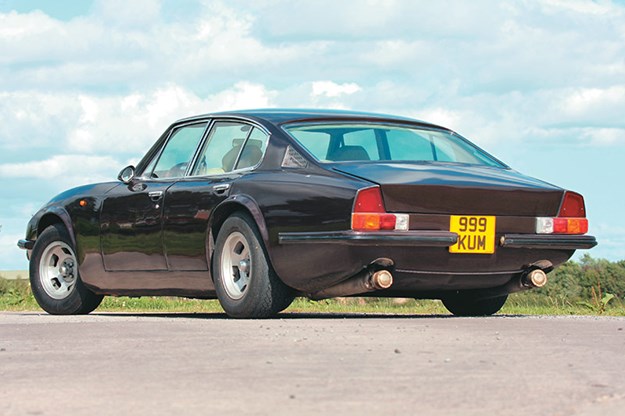
Lawrence was concerned from the outset that his highly-stressed Triumph race engine would be unsuited to a high profile luxury car and suggested the 3.0-litre V8 being developed (also as a race engine) by fellow Brit Ted Martin.
As the Martin engine couldn’t feasibly be downsized to beat the tax impost, the brief changed to encompass a super-luxurious car that would sell in smaller numbers (200-300 annually) to people more able to pay its inflated price.
With Tastevin’s desire to defeat the tax man sublimated, the Martin engine was enlarged to 3.4-litres and power output increased to almost 200kW.

The original Lawrence design for the Monica was technically brilliant but seriously ugly. Its four-door body was chunky, with heavy, unflattering bumpers and inset headlamps. Beneath its unlovely skin, though, the prototype Monica was a lady of considerable class and sophistication.
A steel space-frame chassis and alloy panels kept weight to a very low 1070kg, the De Dion rear-end incorporated self-leveling Koni dampers and there were disc brakes on all wheels.
Late in 1968, and after two of the Lawrence-designed prototypes had been made, Tastevin intervened to have the shape drastically altered and involved Italian styling house Vignale in production of a steel-bodied version.
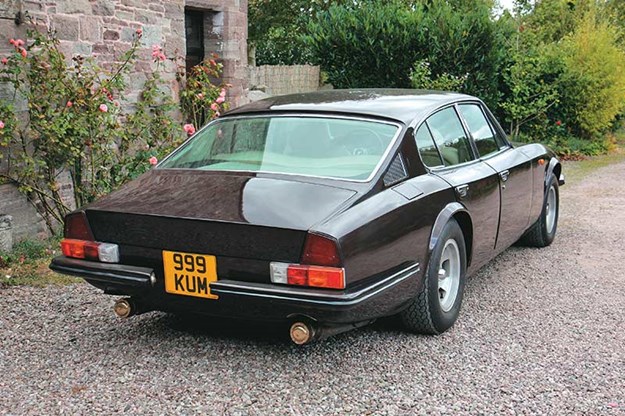
According to Lawrence, the steel- bodied car was far too heavy even for the enlarged version of the Martin V8; exceeding the original target weight by 300kg and incorporating large amounts of lead filler in its construction.
Three years had elapsed since Tastevin had issued his design brief and the project continued to move further away from its original concept.
By 1972, when a Monica reached the glittering surrounds of the Paris Salon Motor Show, the final shape with hidden headlamps and Lotus-like nose was shown, although details including boot lid design and taillamps took a further two years to finalise.

High-performance 3.4-litre British-built V8 was replaced by the uibiquitous 5.6-litre Chrysler V8 but its thirst would be the Monica’s undoing
Show visitors and the motoring press lauded the car’s styling and innovative design but one comment took a shattered Jean Tastevin almost to the point of abandoning the project before a single production car had been made.
"It’s magnificent, but it isn’t French," wrote influential Paris Star columnist Bernard Cahier, and Tastevin headed off to locate an indigenous engineer who could eliminate or at least mask his baby’s more obvious English attributes.
"He took on a Deutsch-Bonnet engineer who set about undoing everything," Lawrence revealed during a 2008 magazine interview. "We lost about a year and in the end we had two designs going head-to-head and ours won six out of the seven tests."
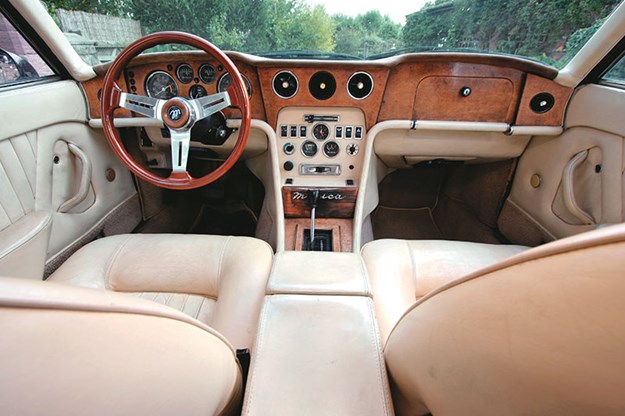
Exterior styling is a mish-mash of shapes but the interior is luxurious with lashings of leather
A further major change involved replacing the unreliable British engine with a 5.4-litre Chrysler V8 – an engine seen briefly in Chrysler Australia’s E55 Charger. Tastevin initially wanted an Aston-Martin V8 but the US engine was one third the price and came with an excellent automatic transmission as part of the package.
Production of the 5.6-litre Monica 560 (earlier cars had been designated ‘350’) finally began late in 1974 at Tastevin’s CFMF factory.
However, by that time production costs had exploded and a Monica delivered into the UK at £14,000 would have been three times the price of an XJ12 Jaguar.
The world, by that time, had changed, and even established manufacturers like Jensen and Maserati were being forced into bankruptcy by a market that no longer wanted big, thirsty, luxury cars.
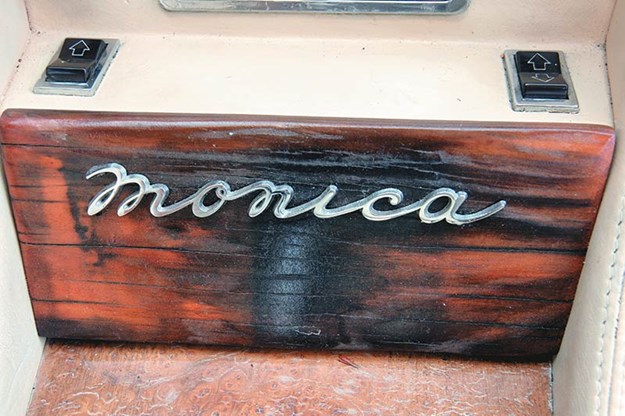
Speed limits were being slashed and strictly policed in the interests of ‘conservation’ and owning a grande routier that was only permitted to travel at the same speed as a 2CV Citroen made little sense.
Eight Monica 560s, plus around 25 prototypes are thought to have been made, with six being sold into the UK. At least one came to Australia and spent some time in a large private collection.
Despite pleas from Lawrence to stockpile cars until the Oil Crisis abated, Tastevin couldn’t be convinced and early in 1975 announced that production had ceased.

I OWN ONE!
Monica development engineer Chris Lawrence liked the Monica so much he still owns one.
His metallic-brown car represents the ultimate in Monica development. It was built in 1974 and is powered by the 5.6-litre Chrysler V8 with automatic transmission.
At the end of Monica manufacturing, Lawrence in his role as UK distributor, was left with five cars, which were sold to an enterprising little bloke by the name of Bernie Ecclestone. Two were converted to RHD by Panther Westwinds as part of an abortive attempt to rekindle production in Britain.

This one was acquired in the late-1990s and, despite its scarcity and superb condition, is used frequently and vigorously by its owner for special events and magazine features.
Lawrence remains active in vehicle design; his most recent project is the Morgan Aero 8.
From Unique Cars #304, Oct/Nov 2009
Unique Cars magazine Value Guides
Sell your car for free right here
Get your monthly fix of news, reviews and stories on the greatest cars and minds in the automotive world.
Subscribe

.jpg)











